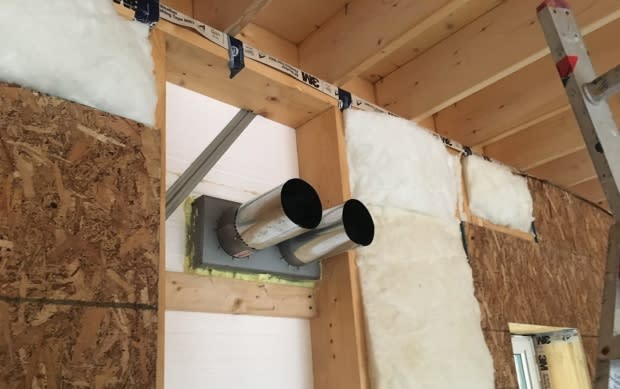Tired of high heat bills, this Flatrock man built an ultra-efficient, passive house
Dave Goodyear can keep parts of his house warm with his own body heat.
The physicist from Flatrock built what he believes is the first passive house in the province — a low-energy, ultra-energy-efficient home, with every square foot modeled to save money.
"You could sit on the window sill when it's –18 out and still be comfortable," he said.
The windows are triple-paned glass. The walls are double studded with air barriers preventing anything from passing through. The entire place is airtight and tested to ensure there's no leaks.
"There is no direct path for energy to go from the outside of your house to the inside, or the inside to the outside," Goodyear said.
And the proof is in the savings.

During his first year in the home, Goodyear was aiming for around 12,000 kilowatt-hours to provide electricity and heat for 3,400 square feet. He came in a little over at 13,000 kilowatt-hours, which equals out to $1,700.
That's a stark contrast to the $4,500 he paid at his old house.
Not bad for a coastal Newfoundland community where the average temperature in January and February is –9 C.
"That was one of the aims when we decided to build the house," Goodyear said. "It was to prove that a passive house could be built here, on the island, using conventional building materials, using everything that could be obtained locally."
Some other tricks of the trade
In blog posts, Goodyear detailed the entire construction process.
He worked with a passive house designer to make sure everything was as efficient as possible. Instead of placing windows on east and west sides, Goodyear has large windows on the south-facing side, and smaller windows on the north.

In the summer, the sun's rays are at a higher angle. The windows are placed in areas where the summer sun won't penetrate too far into the house, avoiding overheating. In the winter, however, the lower angle of the sun means the house will capture more heat and keep it in.
Goodyear also used mostly white paint for the walls and ceilings throughout the house, giving each room a bright feeling.
"On days, even [ones] that are cloudy, there's enough ambient light that you never really need to turn on anything," he said.
Read more from CBC Newfoundland and Labrador

